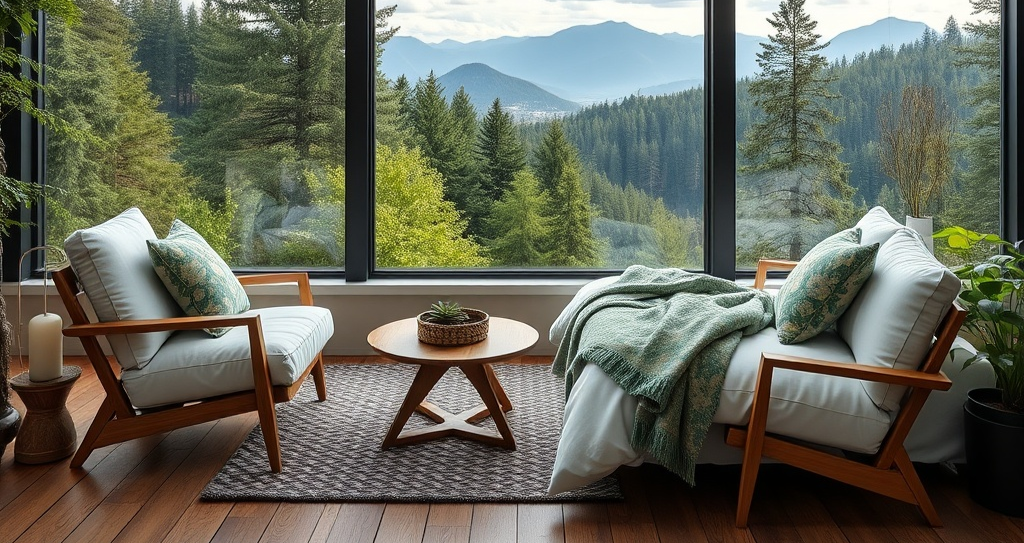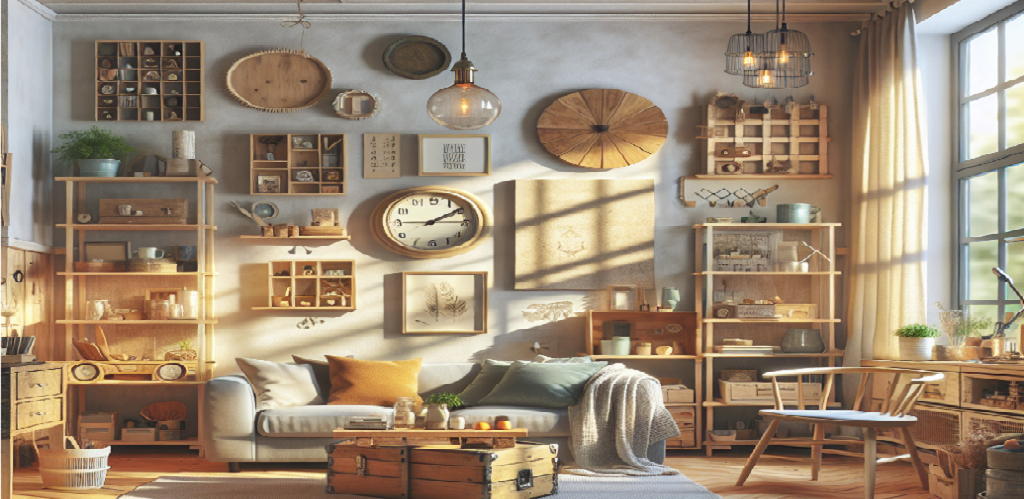Home renovation goes beyond mere aesthetics it is about enhancing comfort increasing functionality and boosting your property value. However renovation costs can quickly escalate especially when unforeseen issues arise or if projects are not carefully planned. For homeowners with budget constraints this can be a significant challenge so we provide Budget-Friendly Home Renovation Tips for Every Homeowner.
What Needs for Budget-Friendly Home Renovation Tips for Every Homeowner
Budget-friendly renovations are not only about cutting costs. They involve making strategic choices to achieve the most impact while minimizing expenses. With the right strategies you can transform your living space kitchen bathrooms and outdoor areas into beautiful and functional parts of your home without spending a fortune. This guide offers valuable tips on making the most of your resources choosing which projects to focus on and carrying out a renovation plan that stays within your budget.
Planning and Budgeting: The Foundation of Budget-Friendly Renovations
A well-thought-out plan helps avoid unnecessary expenses and keeps your project on track.
Assessing Renovation Needs and Goals
Before embarking on any renovation project take time to evaluate your home thoroughly. Walk through each room and note what you like and dislike about the space. Are there repairs that need immediate attention such as fixing leaky faucets repairing walls or updating outdated fixtures? Knowing your renovation goals will help you prioritize projects and make informed decisions.
Consider your way of life and how you utilize various regions of your home. For instance if you frequently cook the kitchen might be a priority for upgrades. If you have a developing family you should zero in on further developing stockpiling arrangements. Aligning your renovation goals with your lifestyle ensures you invest in projects that enhance your daily life.
Setting a Realistic Budget with Contingencies
Whenever you have surveyed your redesign needs lay out a practical financial plan. This budget should include costs for materials tools professional services if needed and a contingency fund for unexpected expenses.
When budgeting consider breaking down costs into categories such as:
- Materials: Paint flooring hardware cabinetry etc.
- Labor: Contractors electricians plumbers etc.
- Miscellaneous: Tools permit delivery charges and emergency funds.
By dividing your budget this way you can see exactly how much you can spend in each area. This makes it easier to make changes if necessary without affecting the entire project.
Researching Costs Materials and DIY Options
Thorough research is vital to budget-friendly renovations. Begin by comparing prices for materials across different stores both online and offline. Look for sales discount sections and bulk purchasing options to reduce costs. Visiting second-hand stores flea markets and salvage yards can also uncover affordable and unique items.
In addition explore DIY options for specific projects. Many small renovations such as repainting building simple furniture or installing shelves can be done with the right tools and instructions. By learning basic DIY skills you can save on labor costs and still achieve professional-looking results.
Creating a Detailed Renovation Plan
A comprehensive renovation plan outlines the sequence of tasks required materials and timeline for completion. Divide your renovation into stages starting with essential repairs or foundational work before moving on to aesthetic improvements. This phased approach ensures that your renovation remains manageable and minimizes disruption to your daily life.
Include a timeline for each task considering factors like delivery times for materials and availability of contractors if needed.
Prioritizing Projects: Maximizing Impact on a Budget
When renovating on a budget it is essential to focus on projects with the most outstanding value and impact.
Identifying High-Impact Areas in Your Home
Certain areas of your home provide more visual and functional impact when renovated. Kitchens and bathrooms for example often influence the value and appeal of a home. Investing in these spaces first can yield significant returns especially if you plan to sell your home. Making small changes in the kitchen like adding new handles modern light fixtures or A new layer of paint can really change the way something looks. and give it a fresh look.
Similarly bathroom renovations like changing out old fixtures re-grouting tiles or updating the vanity can make the space feel new and luxurious without a complete overhaul. These more minor targeted updates are more budget-friendly and still achieve a significant impact.
Choosing Renovations That Enhance Value
When choosing projects prioritize those that improve your home aesthetics and functionality. Some examples include:
- Adding storage solutions: Built-in shelves storage units or closet organizers increase convenience and visual appeal.
- Upgrading lighting: Switching to modern light fixtures or adding dimmer switches can change the ambiance of a room and increase energy efficiency.
- Improving curb appeal: Do not forget that doing simple things like planting flowers giving your front door giving something a new paint job or putting up some outdoor lights can make your home look more beautiful from the outside.
These projects beautify your space and provide practical benefits enhancing your living experience and the value of your property.
Balancing Functionality and Aesthetics
A successful renovation balances style and functionality. For example while you might be tempted to invest in trendy decor or furnishings prioritize elements that also improve the usability of your space. Installing a kitchen island for instance can serve as both a stylish centerpiece and a practical work area.
DIY vs. Professional Help: Making Cost-Effective Choices

Different choices have their advantages and disadvantages depending on how complicated the job is.
Determining When to DIY and When to Hire Professionals
DIY projects are often the most cost-effective solution for simple tasks like painting walls assembling furniture or installing shelving. Many helpful videos and tutorials available online guides provide step-by-step instructions to help even novice DIYers achieve professional results.
Engaging in these tasks without the requisite knowledge and skills can lead to significant expenses and the potential for hazardous situations.It is essential to assess your skill level honestly and know when to seek professional help.
Affordable DIY Projects for Homeowners
If you are looking to save money through DIY projects here are a few budget-friendly options:
- Painting walls or furniture: Putting on a new layer of paint can transform a rooms appearance and vibe.
- Creating accent walls: Use peel-and-stick wallpaper stencils or paint techniques to create a focal point without spending much.
- Installing shelves and storage units: Basic carpentry skills are all you need to build functional and stylish shelving.
- Lighting upgrades: Putting in or changing light fixtures is pretty straightforward and can really improve the vibe of any room.
Tips for Finding Budget-Friendly Professionals
Start by requesting multiple quotes from different contractors and comparing their prices services and reviews. Websites like Angies List HomeAdvisor and local business directories provide valuable insight into reliable professionals in your area.
If you have friends or family who recently completed renovations ask for recommendations. Word-of-mouth referrals often lead to trustworthy contractors and sometimes even discounted rates. Negotiating with contractors can also help you stay within budget. Some may offer lower prices if you provide materials or agree to a flexible work schedule.
Affordable Renovation Ideas by Room
Here are reasonable spending plan cordial thoughts for different regions of your home:
Living Room
- Repainting Walls: A new color scheme can make a room feel fresh and inviting. Neutral tones are timeless while bold accent walls add personality.
- Furniture revamp: changing the design of your furniture can open up space and give the room another look without spending a dime.
- You can also make a gallery wall with family photos or affordable art pieces.
Kitchen
- Refacing Cabinets: Instead of replacing cabinets paint them or install new doors to give the kitchen a modern look.
- Updating Hardware: Changing cabinet knobs handles and faucets is a quick and inexpensive way to refresh the appearance of your kitchen.
- Adding Open Shelving: Shelving is affordable easy to install and gives your kitchen a contemporary airy feel. Use them to display attractive dishware or plants.
Bathroom
- Caulking and Grouting: Grout can become discolored over time and caulk can crack. Refreshing these makes the bathroom look new and prevents leaks.
- Changing Fixtures: Updating faucets towel racks or showerheads can elevate the space with minimal expense.
- Adding Storage Solutions: Install floating shelves or repurpose old furniture like small dressers to increase storage space in the bathroom.
Bedrooms
- New Linens and Bedding: Updating the bed covers pillows and throws has the potential to entirely refresh the appearance of your bedroom.
- Wall Art: Frame inexpensive prints or create DIY art pieces to decorate the walls. You can even hang plants for a touch of nature.
- Lighting Changes: Adding lamps or installing a dimmer switch provides versatility and ambiance.
Outdoor Spaces
- Landscaping: Simple updates like planting perennials adding mulch or creating a small garden can significantly enhance your yards appeal.
- Patio Furniture: Upcycle old furniture by painting and adding cushions or find affordable options at thrift stores and flea markets.
- Outdoor Lighting: Solar-powered lights are an eco-friendly and cost-effective way to enhance outdoor spaces making your patio or garden inviting at night.
Tips for Saving Money During Renovations
Being resourceful is essential to staying within your budget. Here are some tried-and-true ways to cut costs:
Shopping Smart: Sales Discounts and Clearance Items
Always be on the lookout for sales especially during holidays and seasonal changeovers. Clearance sections are also great places to find high-quality materials and decor at reduced prices.
Feel free to negotiate with suppliers. Some may offer discounts for large purchases.
Using Reclaimed Recycled and Salvaged Materials
Reclaimed wood recycled metal and salvaged architectural elements and budget-conscious. Check local salvage yards online marketplaces and specialty stores that offer these materials. Incorporating these unique pieces into your design can create a one-of-a-kind look without the high price tag.
Renting vs Buying Tools: What to Rent and What to Invest In
Specific tools are essential for renovations but may not be worth the investment if you only plan to use them once. Renting tools like power drills tile cutters or ladders from hardware stores can save money and ensure you have access to high-quality equipment.
On the other hand investing in essential tools like a hammer tape measure paintbrushes and a toolbox is wise as these items will be helpful for future DIY projects.
Upcycling and Repurposing Furniture and Decor
Upcycling furniture is not only budget-friendly but also environmentally sustainable. Consider repainting an old dresser reupholstering a chair or turning wooden pallets into a coffee table. Repurposing items you already own or purchasing second-hand furniture for DIY projects can significantly reduce costs while adding a personal touch to your home.re for DIY projects can significantly reduce costs while adding a personal touch to your home.
Sustainable and Eco-Friendly Renovation Tips

Sustainable renovations are good for the environment and can be economical in the long run.
Energy-Efficient Upgrades: Saving Money in the Long Term
Investing in energy-efficient appliances LED lighting and proper insulation can reduce energy bills over time. These improvements might cost some money at first but they will end up saving you money in the long term. Installing programmable thermostats energy-efficient windows and doors. It can also help you save money on your utility bills and make your home more valuable.
Eco-Friendly Materials: Bamboo Recycled Glass Low-VOC Paint
Choosing eco-friendly materials like bamboo flooring recycled glass countertops or low-VOC (volatile organic compounds) paint reduces environmental impact and creates a healthier indoor environment. Many sustainable materials are affordable and comparable in price to conventional options making them a smart choice for budget-conscious homeowners.
Green Building Practices: Rainwater Systems Indoor Plants
Incorporating green practices such as installing rainwater collection systems or adding plants for better indoor air quality can make your home more sustainable. Rainwater systems can be used for irrigation while indoor plants like snake plants or peace lilies Enhance the air you breathe and bring a touch of nature into your surroundings.
Common Mistakes to Avoid in Budget Renovations
Although it is vital to save money it is just as important to steer clear of frequent errors that could result in larger issues.
Lack of Planning: Staying Organized and Prepared
Diving into a renovation without proper planning is one of the most common mistakes. Failing to create a clear plan and budget can lead to overspending and delays. Always take the time to organize your project gather all necessary materials and set a realistic timeline.
Cutting Corners on Quality: Prioritizing Essential Elements
While it is tempting to cut costs by choosing the cheapest options sacrificing quality can be detrimental. For essential elements like plumbing electrical systems or structural components invest in quality to avoid costly repairs in the future. Save money on cosmetic elements like decor but keep the integrity of your homes foundational aspects.
Overlooking Permits and Local Regulations: Avoiding Fines
Many homeowners skip obtaining necessary permits for renovations which can result in fines or having to redo work. Always check local regulations and get the required permits for structural changes electrical work or plumbing updates. Ensuring compliance avoids legal issues and guarantees that the work is safe and up to code.
Conclusion

Revamping your home on a tight spending plan is possible with the correct methodology. You can transform your space without breaking the bank by carefully planning prioritizing impactful projects and making strategic decisions. Start with small changes that fit your budget and gradually tackle larger projects as funds become available.
FAQs: Budget-Friendly Home Renovation Tips for Every Homeowner
How can I start planning a budget-friendly renovation?
To start planning a budget-friendly renovation first assess which areas of your home need the most attention. Prioritize these areas and set a realistic budget with a contingency for unexpected expenses. Research cost-effective materials and decide which tasks you can handle as DIY projects versus those that require professional help.
What are some joint DIY renovation projects?
Joint DIY renovation projects include painting walls updating fixtures caulking bathrooms installing new hardware and creating feature walls with paint or wallpaper These projects are typically manageable for most homeowners and can significantly impact your home appearance without incurring high costs.
Are there any specific renovations that add the most value to a home?
Kitchens and bathrooms are often the best areas to focus on when adding value to a home. Updates like modern fixtures fresh paint and energy-efficient appliances enhance aesthetics and appeal to potential buyers. Additionally enhancing curb appeal through landscaping can offer high returns on investment.
How can I ensure my renovations are energy-efficient?
Conduct an energy audit to identify improvements such as sealing windows upgrading to LED lighting or installing smart thermostats. Take advantage of any rebates or tax credits available for energy-efficient upgrades and consult an environmental architect for expert advice.
What is the best way to start a home renovation on a budget?
The best way to start is by planning and budgeting. Assess your renovation needs and set a realistic budget detailed plan outlining projects you want to tackle. Prioritize high-impact areas like kitchens bathrooms and living spaces and research affordable options for materials and tools.
Can I at any point revamp my home without recruiting an expert?
Certainly! Here is a more broadly understandable version of the text: without professional help especially if they are simple tasks like painting installing shelves or replacing fixtures. However it is wise to hire professionals for more complex work such as electrical plumbing or structural changes to ensure the job is done safely and correctly.
How do you save money on renovation materials?
To save money on materials shop during sales look for clearance items and consider buying in bulk. You can also visit second-hand stores salvage yards and online marketplaces for affordable reclaimed or recycled materials. These alternatives can help you stay within budget while adding unique touches to your renovation.
Are there any cost-effective DIY projects I can do to improve my home?
Absolutely! Some cost-effective DIY projects include painting walls creating accent walls with peel-and-stick wallpaper installing shelves updating light fixtures and repurposing furniture.
How can I ensure that my home renovation stays within budget?
To stay within budget create a detailed renovation plan track expenses and allocate a contingency fund for unexpected costs. Stick to your plan and budget as closely as possible and avoid making impulse purchases or changes that could increase expenses. Researching affordable materials and labor options beforehand also helps you manage costs effectively.
Is it a sound investment to incorporate energy-efficient upgrades during renovations?
Yes energy-efficient upgrades like LED lighting energy-efficient appliances and improved insulation may have a higher upfront cost. Still they save money in the long run by reducing energy bills. These upgrades can also increase your home value making them a wise investment.
Can I upcycle furniture for my home renovation?
Absolutely! Upcycling is an extraordinary cash-saving tip and adds novel parts to your home. You can repaint old furniture reupholster seats reuse wooden beds into footstools or retire. Upcycling not only cuts costs but also promotes sustainability by reducing waste.
What are some budget-friendly ways to improve outdoor spaces?
Improving outdoor spaces can be done affordably by planting flowers adding mulch and creating miniature gardens. You can also upcycle old furniture for outdoor seating install affordable patio lights or make a DIY fire pit for added functionality and ambiance.
How can I find affordable contractors for my renovation project?
Finding affordable contractors starts by getting multiple quotes and comparing prices services and reviews. Check online platforms like Angies List HomeAdvisor or local business directories. Word-of-mouth referrals from friends or family who have recently completed renovations can also lead to trustworthy and budget-friendly professionals.
What should I avoid when renovating on a budget?
Only dive into a project with a plan or budget which can lead to overspending. Keep quality for essential components like plumbing and electrical work and always obtain necessary permits to avoid legal issues. Additionally resist the urge to follow trends that might not be practical or add lasting value to your home.
Are sustainable materials affordable for renovations?
Many sustainable materials are surprisingly affordable and offer comparable prices to conventional options. For example bamboo flooring recycled glass countertops and low-VOC paint are eco-friendly choices that do not necessarily cost more. Incorporating sustainable practices like reclaimed wood and Adding wallpaper can be a budget-friendly way to give your home some personality.
What are some tips for maintaining renovated spaces?
Regular maintenance is vital to preserving renovated spaces. This includes cleaning seasonal inspections and promptly addressing repairs such as fixing leaks or touching up paint. Consistent upkeep ensures that your renovated areas remain functional and visually appealing for years to come.
